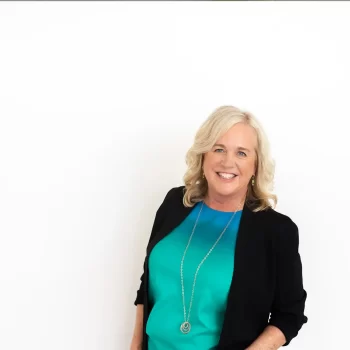Why Surveys and Focus Groups Don’t Uncover Actionable Customer Insights
If you’re a regular reader of this blog (and if you’re not you can get it delivered right to your inbox here), you know that I’m a big fan of Customer Insight Interviews. These are one-on-one conversations with your customers (or the people that you want to be your customers) about what’s important to them within the context of your field and what’s standing in their way (the problem you can solve for them).
When I first recommend them to people, I’m usually met with a lot of resistance.
- “I do or used to do exactly what my client does so I already know all the problems.”
- “My clients don’t know what they want so talking to them isn’t going to help.”
- “What about Ford or Steve Jobs?” (TL/DR their fabled comments about the lack of value in talking to customers are 1) misappropriated and 2) taken out of context.)
- “I don’t know anybody who is like my ideal client so who am I going to talk to?”
- And the ever popular “It will take too long and I don’t have time.”
I will address all of these in upcoming articles because each of these limiting beliefs stands in the way of building what could be an emotionally and financially rewarding business. But the one I want to talk about here is the idea that a survey or focus group can deliver the same results as a 1:1 interview.
I used to believe that too. But today, I’m 100% sure there is no substitute for talking to directly to the people you want to work with.
The Problem With Surveys
One company I worked with a few years back had an app for sports coaches. Their investors were getting very impatient about the lack of revenue, but the founder was adamant that he didn’t want to talk to his customers. So I got him to agree to a survey. The response rate was pretty low and the data that did come back validated his beliefs – first that paying customers loved the app and second that they wanted the exact features the founder was pouring money and time into getting developed.
What the survey didn’t show – and one of the main reasons for the low response rate – was that most of the customers who downloaded the free version (and were supposed to be the revenue source) weren’t even using the app. (I uncovered this using available in-app data that the founder also wasn’t interested in looking at.)
They didn’t understand how to use it because getting it up and running was pretty complex. So it wasn’t solving their problem, and they had no interest in the premium features because they weren’t even using the free features!
***
Surveys can do a good job telling you the “what”, but they usually fall short when it comes to the “how” and the “why”. Even if you include open-ended questions, people either do not answer them or don’t offer them in as much detail as they would in a conversation. Additionally, people self-select to take surveys so you are more likely to get respondents who either:
- really love you and want to tell you about it or,
- really have an issue and want to tell you about it.
The people in the middle are less motivated to respond. Even if you offer an incentive, you still have self-selection bias towards people who want the incentive.
Finally, surveys don’t convey any emotion. You have no context as to their mood or situation when they wrote the answers. Further, you can’t tell if people get agitated around a certain challenge, want to talk about it more, or have a tangent thought. They are limited to the questions and answers provided.
The Problem with Focus Groups
Focus groups can be an incredible tool for coming up different ways to solve a problem for a specific group of customers. But they are less good at helping you identify what the problem actually is.
Focus groups are superior to surveys in terms of providing an opportunity for people to expand on their answers. Additionally, you get some context into people’s emotions, and you can also follow tangents that are introduced. (Conversely, conversations can easily get off-topic when there are multiple people in the room.) But there are things people think and feel that they will not share in a group that they will share in a one-on-one conversation.
Also – from a pure execution perspective, focus groups require coordinating multiple schedules and flow better when done in person making them less convenient to conduct than surveys or even one-on-one video calls.
The Benefits of 1:1 Interviews
Conversations with one other person are convenient and easy to schedule. Especially if you only ask for 30 minutes of someone’s time.
They offer the opportunity to learn not only from the person’s answers but from their emotional state. Where are they sad? Where do they get excited? What is it that they want to talk about more?
Finally, they invite people to open up and confide in you in a way that they might not in a room full of others and certainly not in writing.
Your customer is not an audience or an avatar. They are a specific person who is willing to pay to get a problem solved and they want your help to get it done.
As a group, your customers may have similar objectives and similar challenges that stand in their way of getting there. But
- they may have many different ways of describing those challenges
- they may be trying different things to solve those challenges
- there may be emotions and personality traits that underpin the challenges and shape the path to the objective that are non-obvious
These are the things that often remain hidden in surveys and focus groups that get uncovered in one-on-one interviews.
To wrap up, one-on-one conversations win in terms of understanding your customers’ needs, challenges, and motivations compared to surveys and focus groups. And the benefit for us as entrepreneurs is that they help us stop looking at our businesses in terms of what we want to sell and to start looking at it in terms of what our customer wants to buy.




